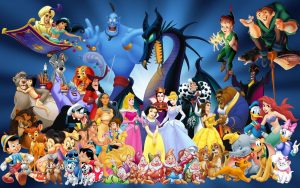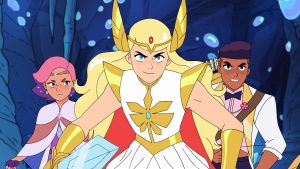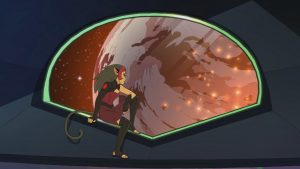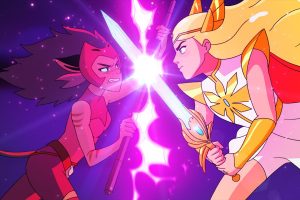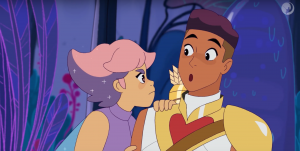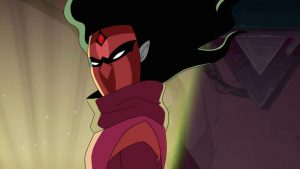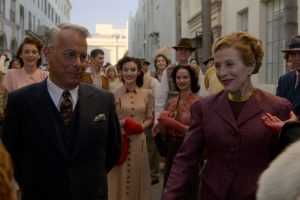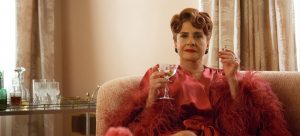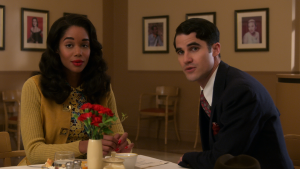It’s appropriate that the most purely, unironically wonderful movie of this gloomy year goes hand-in-hand with “the most wonderful time of the year”, the holiday season. Jingle Jangle: A Christmas Journey is adorned with all the embellishments of the most nostalgic classics, but this lighthearted yet surprisingly impactful steampunk Christmas epic has a potent, forward-looking magic that is entirely its own. To say it’s epic is no joke either: the story is action-packed, punctuated by dazzling musical interludes, and spanning five generations of one incredibly inventive family.

That this magical, multi-generational family happens to be Black and specifically comprised mostly of Black women is not merely a more accurate and inclusive reflection of the world we live in, but is also deeply important to the film’s hopeful message. Although I will leave the matter of whether or not Jingle Jangle is good representation to Black film critics and viewers, I will say that the film’s joyful, diverse, steampunk world left me feeling so inspired and empowered that I truly hope it will do the same for Black audiences of all ages, who haven’t seen themselves represented anywhere near enough in mainstream media: neither in holiday movies, nor in steampunk – which, to be honest, has never been translated particularly well to a live-action medium until now. And whereas a majority of steampunk gets justly criticized for what often feels like an inability by the genre to break free of the same-old Euro-centric, imperialist tropes, Jingle Jangle brings with it an entirely fresh and unique “Afro-Victorian” aesthetic: something that is layered into the styling for the hair, make-up, and costume design, as well as some of the film’s most inspired musical selections – most notably a remix of Ghanaian artist Bisa Kdei’s Afrobeat hit “Asew”, which plays over a lively snowball fight.
With Grammy and Academy Award-winning singer/songwriter John Legend producing, it’s no wonder that Jingle Jangle has the lineup of standout vocal talents and songwriters that it does – including Legend himself, who contributed his talents personally to what is, unsurprisingly, the film’s best song: “Make It Work”, an epic duet between stars Forest Whitaker and Anika Noni Rose. Thanks to compelling dance choreography by The Greatest Showman‘s Ashley Wallen and David E. Talbert’s eye-catching direction, none of these musical numbers fall flat, though a few are simply too short: with Ricky Martin in particular being given very little time or material to work with, and the aforementioned Rose (the iconic voice behind Tiana, Disney’s first Black princess) only getting one opportunity to flaunt her vocal strengths – so deep into the film’s runtime I was scared she wouldn’t get to sing at all.

Rose’s Jessica Jangle, however, has a fairly small role; and it’s understandable – though regrettable – that she doesn’t have more to do. The majority of the film focuses on the dynamic between her father, Jeronicus Jangle (Forest Whitaker), and her own daughter, Journey (promising newcomer Madalen Mills, whose equipped with an incredible voice). Jeronicus, once the most imaginative toy-maker and inventor in all the land, is now a cranky old man living above a pawnbroker’s shop, while Journey is, of course, the bright and sparky young soul who must help him save himself and the last of his long-lost inventions, a robot named Buddy that flies and talks and runs on belief (“believepunk” doesn’t sound quite as catchy as steampunk, though), something that Jeronicus has been sorely lacking as him and his business have fallen into disrepair over the years.
The supporting cast are all excellent, but the one standout whom I simply have to mention is Lisa Davina Phillip, who plays the mail-carrier Ms. Johnston. Fun, flirtatious, and constantly accompanied by a trio of random backup dancers who pop up out of nowhere like sidekicks in an animated movie, Johnston is one of the most delightful comedic relief characters I’ve seen in a while, and I hope that Phillip, whose filmography is still relatively small, gets much more work off this outstandingly good role. Her expressive facial acting and comedic timing even overshadow the film’s campy bad guy.
Keegan-Michael Key plays this character, a hopelessly unimaginative inventor by the name of Gustafson who is somehow under the sway of a narcissistic toy matador named Don Juan (voiced by Ricky Martin), who plots his escape from Jeronicus Jangle’s emporium early on in the film after overhearing his maker’s plan to mass-produce him for the enjoyment of children worldwide. With bland writing, unclear motivations, and a string of jokes that simply aren’t funny, Gustafson and Don Juan are the weak links in this movie. The plot misses a golden opportunity with their characters, too: if Gustafson’s plan is to become fabulously wealthy by stealing all of Jeronicus’ inventions, and Don Juan’s only fear is of being mass-produced and sold, wouldn’t that create a potential conflict of interest between the two? Especially since Gustafson doesn’t actually have any reason to obey the tin toy’s orders (since he is, you know, a toy and all)? Apparently not, since this glaringly obvious solution to all of Gustafson’s problems is taken off the table by Don Juan having apparently “forced” Gustafson to destroy the blueprint for his design offscreen…and again I ask, how can a toy force a human to do anything?

Jingle Jangle‘s costume designer Michael Wilkinson can only do so much for Gustafson’s half-baked character, but his talent is on display everywhere else in the film, in the elegant array of costumes created from a clever mixture of European and African-inspired patterns and styles. Hairstylist Sharon Martin, meanwhile, was assigned the task of recreating Black Victorian hairstyles based on rare photographs from the era: her designs in particular come across as both authentic and beautiful, a tribute to the enduring power and artistry of Black hairstyling.
In a year as exhausting as this one has been, fun and lighthearted films like Jingle Jangle are especially necessary for the respite they offer from day-to-day fears and worries. This is doubly significant given how often Hollywood continues to depict Black characters onscreen only as they exist in relation to traumatic subjects such as slavery and racism, subjects that Hollywood usually exploits for easy Oscar-bait: to see Black heroes and heroines starring in a cheerful holiday musical adventure movie that exists simply to be fun is groundbreaking because of how simple it seems. But that simple magic is what I find to be Jingle Jangle’s strongest asset, and the secret ingredient in this delightful story that will keep audiences coming back for many Christmases to come.
Movie Rating: 9/10
